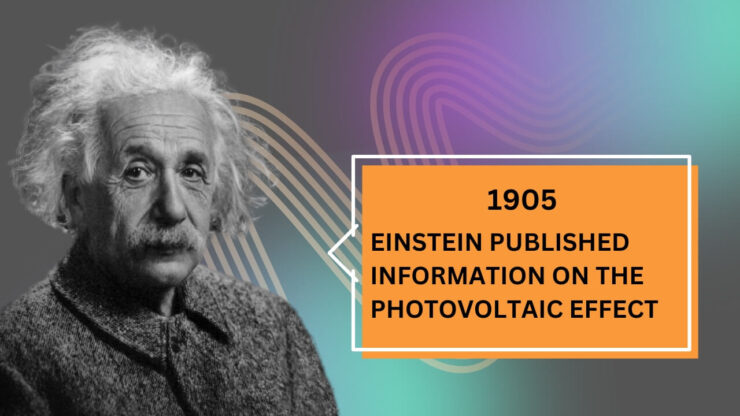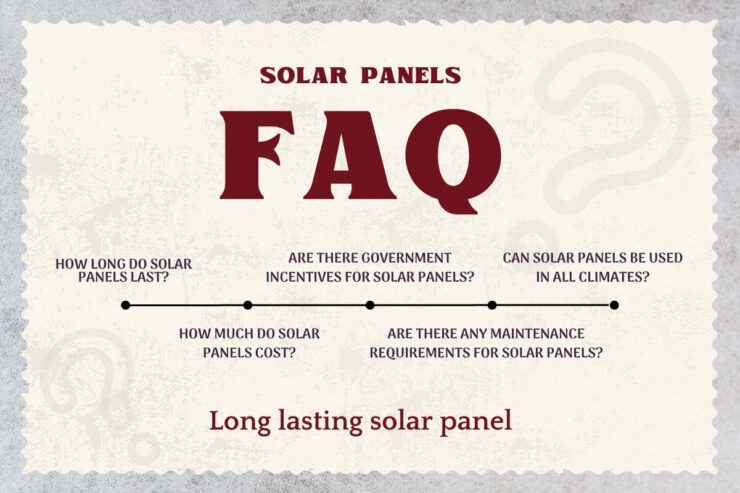Solar energy power has come a long way since its invention, and nowadays, when we think about it, the first thing that comes to mind is panels that power smart systems for our homes and various other appliances. Today, we are going to talk about who invented solar panels and discuss their history over the course of years.
Although solar panel technology is something relatively new, solar energy itself has a long history that dates centuries before panels even became a thing. It is a fascinating history that old societies learned to utilize and use to sustain their livelihoods. The concept of harnessing the sun’s power is a concept that is almost old as humanity, and we are going to take a deep dive into this topic. There is a lot to cover, so let us start without further delay.
Who Invented Solar Panels?

Solar panels are an invention that many scientists have contributed to throughout history. It is likely that the biggest contribution came in 1839 from the mind of Edmund Becquerel, a Frenchman who was only 19 years of age at the time.
He contributed by discovering the photovoltaic effect, which is a fundamental scientific process behind the solar cell. He made this discovery by experimenting with a couple of metal electrodes.
This whole process was refined over the next years by some of the best scientists in history. The testament to the greatness of this discovery is the fact that in 1923, Albert Einstein received the Nobel Prize for his theories explaining the photoelectric effect.
In the early 1950s, the world had a chance to witness the first uses of the photovoltaic cell, which was commonly known as the PV cell. These cells were produced from very thin wafers of silicon, and these are, in fact, the types of solar panels that you can hear about in the modern era.
Back in 1958, the first solar-powered satellite was launched, and solar energy has advanced a lot since then. Since nanotechnologies have come a long way over the last few years, the efficiencies of the PV cells are now much higher when compared to what they used to be over half a century prior.
When Was the First Solar Cell Invented?

Solar panels are made of tiny units that are known as solar cells, which are, of course, one of the biggest inventions regarding this technology. In 1888, Russian scientist Aleksandr Stoletov invented the first photoelectric solar cell. The photoelectric effect is very similar to the photovoltaic one.
To understand the importance of this invention, we will look at how modern solar panels work. Essentially, when light hits the panel, it releases the electrons from the silicone within. When free, electrons move toward the other end of the silicone cell, and this movement creates an electrical voltage that produces power.
When it is all said and done, the 1888 solar cell worked on the same principle, and the only difference was that it was without silicon. Several years later, scientists used the photoelectric effect to perfect the whole invention. The biggest step forward was the fact that they figured out that the sun’s light and heat can produce an electrical current.
Who Made the First Solar Panels?
One of the first inventions that resemble today’s solar panels most was the creation of Charles Fritts. He invented the first solar cell that worked on selenium. In 1884, the first rooftop solar construction appeared in New York City, but not a long time passed before everyone realized that selenium was not the cost-effective solution.
For this reason, another scientist Russel Ohl tried to use silicon instead of selenium in 1941, and by the 1960s, his cells became more efficient by 5 percent. Nowadays, this technology has advanced significantly, and modern panels can reach up to 22 percent of efficiency. To put it simply, this is how much energy a system can convert into usable energy, which is quite impressive.
Timeline of the Invention of Solar Panels

- 1839 – Frenchman Alexandre-Edmond Becquerel created the first photovoltaic cell.
- 1861 – Auguste Mouchout patents a solar-powered motor.
- 1873 – Willoughby Smith discovers the photovoltaic effect in selenium.
- 1876 – W.G. Adams discovered the change in the electrical resistance of selenium due to radiant heat, light, or chemical reaction.
- 1882 – Abel Pifre creates a solar engine that delivers enough electricity to power his solar printing press.
- 1883 – Charles Fritts developed the first solar cell by using selenium covered in gold.
- 1883 – John Ericsson created a “sun motor” which uses parabolic trough construction, which focuses solar radiation on running a steam boiler. This method is still used in thermal power stations.
- 1884 – Charles Fritts makes the first solar panels on a rooftop in New York City.
- 1891 – Clarence Kemp invented and patented the passive water solar heater.
- 1914 – Robert Andrews Millikan reveals experimental proof of the photoelectric effect.
- 1921 – Albert Einstein wins the Nobel Prize for a technical paper explaining the photoelectric effect.
- 1954 – Bell Labs invented the first solar cell with 4 percent efficiency. It was able to run the everyday equipment.
- 1957 – Hoffman Electronics made photovoltaic cells with 8 percent efficiency, and one year later, they achieved 9 percent efficiency.
- 1963 – Japan installed the 242 W solar array on a lighthouse which was the biggest back in the day.
- 1981 – Paul MacCready created the first solar aircraft and managed to travel across the English channel using nothing but solar power and wind.
- 1983 – The global production of solar photovoltaics passes 21MW.
- 1985 – The University of New South Wales sets the record in silicon solar efficiency, breaking the 20 percent margin.
- 1993 – Pacific Gas and Electrical developed the first distributed power plant.
- 1998 – Subhendu Guha invents a flexible solar roofing material by utilizing amorphous silicon.
- 2001 – John Howard introduced a renewable energy target with the goal of reaching 20 percent renewable by 2020.
- 2008 – Many states of Australia introduced feed-in-tariff schemes to inspire Australians to install residential solar systems. These schemes led to the “solar boom” in Australia.

The Impact of Solar Panels
The invention of solar panels has had a profound impact on the modern world. For the first time in history, renewable energy is being used to generate electricity on a large-scale basis, fundamentally changing how we produce and use power.
Solar power is cost-effective, secure and reliable, even in regions with limited access to energy or limited space for outfitting solar systems. As an added bonus, it helps reduce carbon emissions and can propel a move toward a carbon-neutral lifestyle. Solar technology is also versatile—it can be used for both residential and commercial applications alike. It’s no wonder that the industry continues to grow year after year!
What Happens With Solar Panels and Solar Energy Today?

Nowadays, we can see that the use of solar panels and solar-powered devices has expanded even further in various branches and appliances. Investments in solar parks and farms seem to appeal to more and more people across the globe.
It is a renewable source of energy and, as such, is in a very promising position. Technology is better than ever, and scientists constantly work on developing it even further.
The Future of Solar Panels
As solar technology continues to improve, the future of solar energy looks brighter than ever before. Solar panels have come a long way since they were first invented in 1839. As the technology used to produce them improves, so does the performance and efficiency of the panels themselves. Thanks to advances in materials science, researchers are now focusing on developing ultra-lightweight solar cells that can be rolled out on rooftops and other surfaces easily and quickly.
At the same time, researchers are also exploring ways to make solar energy even more efficient and cost-effective. Currently, new designs are being tested that focus on reducing waste heat from modules or improving harvesting capabilities with multi-junction cells.
Technologies like these will help reduce operational costs for businesses and homeowners alike so that more people can tap into clean, renewable energy at an affordable price.
Solar cell developments are also making it easier for homeowners to monitor and manage their energy usage more closely. The new software allows users to track their energy usage in real-time and identify trends, providing them with greater control over their electricity bills.
This kind of broadened accessibility along with advances in research could help accelerate the widespread adoption of renewable energy sources sooner than most expect – ultimately leading us closer to a greener future powered by clean sources of electricity like solar power.
FAQ

How long do solar panels last?
Solar panels are designed to last for many years, typically around 25-30 years. However, their efficiency may decrease over time, typically by around 0.5% per year.
How much do solar panels cost?
The cost of solar panels can vary depending on the type and manufacturer, as well as the location and size of the installation. On average, solar panel systems can cost between $10,000 and $25,000 before government incentives.
Are there government incentives for solar panels?
Yes, many governments offer incentives to encourage the use of solar panels. These can include tax credits, rebates, and grants. It is best to check with your local government for the specific incentives that are available in your area.
Can solar panels be used in all climates?
Solar panels can be used in most climates, but they are most effective in areas with high levels of sunlight. However, solar panels can also be used in cloudy and rainy climates, but their effectiveness will be reduced.
Are there any maintenance requirements for solar panels?
Solar panels require very little maintenance, mainly cleaning them periodically and monitoring their performance. The inverter, which is the device that converts DC electricity to AC electricity, also may require some maintenance, but it is usually done by the company that installed the system.
Final Words
There is no doubt that the future of solar panels and the utilization of solar energy has a very bright future. The invention of these panels delivered a huge impact on the world, and that impact is even bigger with each passing year.
The development of solar panels is very important, as it makes us less dependent on traditional energy sources. Another great thing is that this type of energy is much more sustainable and healthier for our environment and environmental awareness is what should push us towards making the panels and solar energy even better in the future.

